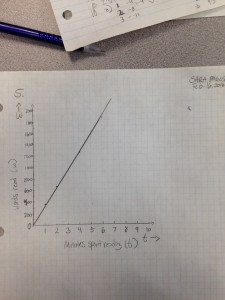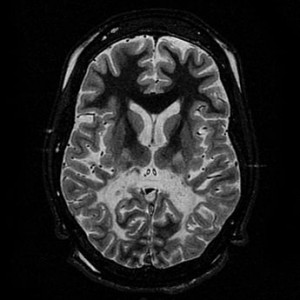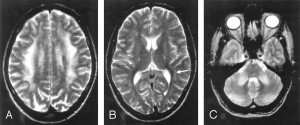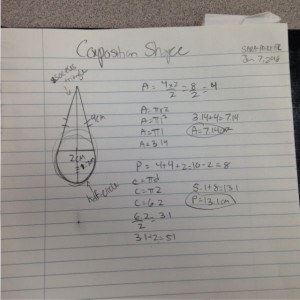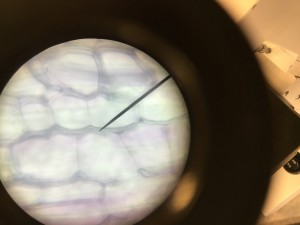I feel like this assigned project is very relevant today, this week. Initially, we were studying DNA and genetic mutations in Science class, and related diseases. The most prominent harmful genetic mutation is cancer, in all its forms. We were told to do a project about it, on whatever branch that you can write a report on cancer about. Mine was initially going to be from a statistical, scientific point of view. I would rattle off stats and facts, and somehow link them together using what some people call my “special writing skills”. But after hearing of so many of the world’s cherished be taken by cancer, I can’t help but feel emotional.
I’ve never been worried about getting cancer. I’ve had relatives who’ve been victims of it, of course. Approximately 40% of people will be diagnosed in their lifetimes, and almost 100% will be undoubtedly affected. My uncle died of mesothelioma, the decay of the protective tissue in the lungs. However, it was asbestos-induced, so I would not inherit it unless I worked unsafely in decade-old shipyards. My grandfather, on the other side of the family, had pancreatic cancer, one of the most common cancers in the world. However, it is most common in men and normally doesn’t arise until after the age of 65. My father had basal cell carcinoma on his ear, but it was exterior and could not spread. He and I are both ridiculously pale (blame the Scottish heritage), so it was basically just a sunburn that turned into a scab that wouldn’t go away. The doctors cut it off (in no rush, I can be sure of that), replaced some of the tissue with his other ear, and that was the end of it. My dad had to wear a giant bandage over his ear for a week, and when he took them off, it was pretty disgusting (I found it fascinating though – I’ve never gone queasy around blood and guts), but those were the only side effects. I’ve never witnessed anyone suffer from cancer, and as far as I was concerned before conducting my research, I never would. But I fear I should.
I live in Canada, North America. Here, the most common cancer is that of the breast. It is also the number one killer of women. However, I do not have any history of this horrible disease, so I like to think I’m fairly safe. But on the other hand, I live in North America, where smoking, alcohol, and obesity runs amok. Coincidentally enough, smoking, alcohol, and obesity are three of the main causes of cancer. Tobacco use has long been warned against, but lung cancer is still on the rise. Smoking itself has decreased, but the dangers of second-hand smoking has only just been recently realized, and as a high school student living in an urban area, smoke is all around. I’d rather not get into obesity, but most medical experts agree that a good exercise regimen and a balanced diet will greatly reduce the risk of getting cancer. Statistics can also show that 1/3 of deaths by cancer are directly linked to obesity and lack of exercise.
I am not, however, incredibly tempted by alcohol. Of course there are underage drinkers, and most adults I know enjoy a couple glasses of wine, but while liver cancer remains one of the top global killers, it is not in North America. The East-Asian country of Mongolia has the highest rates of liver cancer in the world, at approximately 94 out of every 100,000 people dying of it every year. This is mostly blamed on many cases of Hepatitis B and C, and lots of alcohol. China is also the most common place you will find stomach cancers, due to a large portion of their diet being salty, and the food and water that is consumed is, more often than not, contaminated. Lung cancer follows not far behind. If you go down even more south, in South-East Africa, cervical cancer is most plentiful. By comparison, there are hardly any cases in America due to the invention of the cheap and convenient Pap test, but this routine exam is not available in developing countries. But this is not an unique case in third-world nations – lack of resources is, contrary to popular opinion, the number one reason that diseases, that can be easily captured and cured here, are so plentiful there. I’ve seen it for myself, and the doctors there are much more concerned with malaria and HIV than with cancer, and rightfully so.
A very common cancer in North America is called melanoma, also known as skin cancer. This normally comes from prolonged exposure to radiation and UV rays. UV rays come from tanning beds and the sun itself, and when you live in a culture that loves the beach and the summer (thanks to the Beach Boys and movies from the 1970s), melanoma is increasingly common. In the West, we have a suspicious lack of genetic defense to the sun. It rains so much here that our skin is allowed to be fair, but when the clouds are grey for so long, if the sun comes out, we are outside and bathing in it. At least, I do that. And that’s why me, someone with relatively no genetic history of cancer, am at risk. I mentioned previously I am pale, and if I neglect to put on sunscreen and wear a hat, I may become one of those 14.5 million people who live with cancer. I am constantly reminded about my risk from one of my good friends, whose father died of severe melanoma.
But my case is not rare. I didn’t have to do very much digging to effectively learn that of course I’m prone to cancer, and I highly doubt you do either. And with recent reminders of how deadly a disease cancer is, I don’t believe much more motivation is needed. The number of people diagnosed with cancer is expected to rise to 19 million by 2024, but we can do a part in preventing that by educating ourselves. A very small portion of cancers are inherited, with the number one killers caused by tobacco, alcohol, living an unhealthy lifestyle, and UV ray exposure. The death rates have been generally on the decline, but rates of certain types of cancer have stabilized, if not increased. People are living longer, therefore being more prone to cancer, but there may just be an end in sight. We wish for a cure, but it is not that simple. There are many types of cancer and cancer cells are unpredictable. Radiation and chemotherapy remain very dangerous, but we do have cures to certain types. Scientists are hard at work learning how to fight our own cells, but we can help too, by donating or just keeping yourself healthy and learning what your risk is. There are many treatments for cancer, but the best is early detection. And in a time where have we already lost so many, you might as well start learning.
In memory and dedicated to
David Bowie, Alan Rickman, and all the others who have perished. You are not another statistic, not another figure on a page. You are people, and are missed.
SOURCES:
www.cancer.gov/about-cancer/what-is-cancer/statistics
www.cancer.org/cancer/cancercauses
www.globalcancermap.com
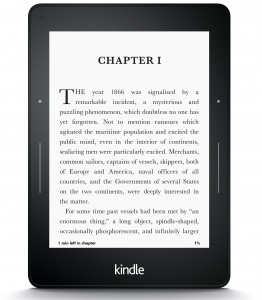 The Kindle can tell you how many minutes is left in the book you’re reading based on how fast you read. It knows how quickly you turn the page, and can thus assume how many words you can read in a minute.
The Kindle can tell you how many minutes is left in the book you’re reading based on how fast you read. It knows how quickly you turn the page, and can thus assume how many words you can read in a minute.
